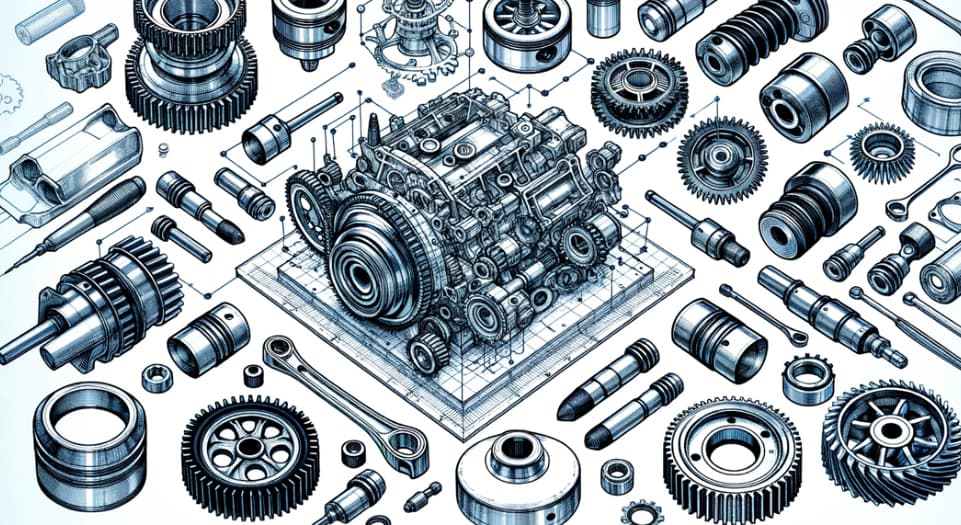Best LLC Service in California for Startups
Forming a Limited Liability Company in California requires adherence to specific state regulations, detailed paperwork, and ongoing compliance. These administrative duties often divert attention from primary business development.
Fortune business ranking manages this procedural burden. They handle state filings, assist in meeting legal standards, and allow founders to focus on their company. Several providers offer these services, making the selection a significant initial decision for any new startup.
We review six top LLC services here, comparing their strengths, prices, and main features to help you decide which one fits your company’s requirements and goals.
1. Northwest Registered Agent

Northwest Registered Agent is a business formation service that specializes in providing straightforward and privacy-focused LLC formation, including for startups in California.
The company distinguishes itself with a simple, transparent model: a single, comprehensive LLC formation package priced at $39 plus state fees. This package is designed to include all essential services without unnecessary add-ons, ensuring clients get exactly what they need to form their business without confusion or hidden costs.
Northwest’s approach is based on simplicity. It offers one clear package instead of many complex options. Its customer support team consists of experts who provide guidance, not salespeople who push for upgrades. This focus on clarity is also reflected in its straightforward website, which makes the formation process easy to manage.
Key Strengths
- Transparent, Simple Pricing: One flat-rate package at $39 + state fees with no hidden costs or upsells.
- Superior Address Privacy: Unique offering that allows you to use their address on all California formation documents to keep your personal address off public records.
- Expert Customer Service: Support from knowledgeable LLC experts, not a standard sales team.
- Data Privacy Commitment: A firm policy of not selling customers personal information to third parties.
- Free First-Year Registered Agent: Includes a full year of registered agent service, which renews at a standard rate thereafter.
Northwest Registered Agent operates on principles of privacy and transparent pricing. The service provides a single, standard package containing all essential features. Its address privacy service allows California businesses to exclude personal addresses from public filings, reducing junk mail and enhancing information security.
This approach, combined with a strict policy against selling customer data and access to expert support, positions the service for business owners seeking straightforward, security-focused formation solutions.
2. ZenBusiness

ZenBusiness supports entrepreneurs in launching and maintaining new companies. The service, established in 2017, specializes in California LLC formation. Its tiered plans begin with a $0 + state fees option for essential filings.
The Starter, Pro, and Premium tiers provide scalable choices, from basic processing to expedited filings and operating agreements. ZenBusiness also supplies auxiliary tools like website building and compliance monitoring.
Clients should note that registered agent service requires a Pro plan subscription or higher, constituting a recurring expense. This structure creates a consolidated platform for business formation and early-stage management.
Key Strengths
- Affordable Entry Point: A $0 + state fees Starter plan makes initial LLC formation highly accessible.
- Tiered Service Plans: Flexible options (Starter, Pro, Premium) allow businesses to pay for only the services they need.
- One-Stop Shop: Offers a suite of tools beyond formation, including website building, domain registration, and logo creation.
- Competitive Add-On Pricing: Website and branding services are offered at competitive rates compared to external platforms.
- Expedited Processing: Higher-tier plans offer significantly faster filing times, with rush processing available.
ZenBusiness is notable for its low starting cost, which appeals to entrepreneurs in California seeking to form an LLC with little initial spending. Its $0 Starter plan handles the basic state filing requirements.
The company also functions as a one-stop shop by combining formation services with website building, domain registration, and branding tools. This allows a business to establish its legal and online presence at the same time. Although the registered agent service costs extra, ZenBusiness provides adaptable and scalable options for new companies.
3. LLC.Services

LLC.Services provides a fast, affordable, and fully integrated service for forming an LLC. The company specializes in helping California startups launch quickly and efficiently, simplifying the entire formation process with a transparent approach and a pricing structure that has no hidden fees.
This allows entrepreneurs to establish their business in California without unnecessary complexity or unexpected costs.
The service is built around a comprehensive, all-inclusive package that handles the essential steps for establishing a compliant LLC. This package provides everything a new California startup needs to form the business and ensure it meets initial legal requirements, creating a solid operational foundation from the start.
Key Strengths
- Complete Service Bundle: It provides all vital formation and compliance services in a single package.
- Clear, Predictable Pricing: The fee structure is straightforward and contains no unexpected charges.
- Rapid Filing System: The company uses an efficient process to ensure quick and simple LLC formation.
- Proactive Compliance Alerts: The service monitors and sends reminders for critical state filing deadlines.
- Essential Document Preparation: It drafts necessary paperwork, such as the Operating Agreement and EIN application.
LLC.Services includes a full year of registered agent service in every formation plan at no additional charge. State law requires every LLC to have a registered agent. This inclusion immediately establishes a company’s state compliance. Entrepreneurs then have one less administrative task to manage, freeing them to concentrate on business growth.
4. bestllc.services
BestLLC.Services provides rapid and economical LLC formation across the United States, including California. It suits entrepreneurs who need extensive features and reliable support at a modest price.
The company’s process simplifies business creation. Its services extend past initial filing to include ongoing legal documentation and attorney consultations. This makes it a continuing resource for a company’s future legal and compliance requirements.
Key Strengths
- Transparent, Affordable Pricing: Very clean pricing with a “free (state-fee only)” formation option, providing clear value.
- Comprehensive Service Bundle: Includes one full year of registered agent service in its core offering.
- Reputable and Well-Known: An established provider with a broad set of reliable legal services.
- Strong Customer Support: Known for providing good customer support throughout the formation process.
- User-Friendly Platform: Features a simpler interface with a guided process for ease of use.
- Scalable Services: Offers additional services like web and branding tools, legal documents, and lawyer consults for growing businesses.
BestLLC.Services provides an affordable and comprehensive service package. It includes important first-year services such as a registered agent at no additional cost. The company also maintains a reputation for reliable customer support.
Furthermore, it distinguishes itself from basic filing services by offering a full set of legal and business tools. This makes it an ideal long-term partner for California startups that want an affordable launch today and may need accessible legal services or consultations as they grow tomorrow.
5. BestLLCServices.co

BestLLCServices.co is a top-tier provider of comprehensive LLC formation services, offering its fully integrated solution to entrepreneurs in all 50 states, with specialized support for California startups.
The company manages the entire launch process, from preparing and submitting state documents to providing a full year of registered agent service and securing a Federal Employer Identification Number (EIN) through an intuitive online platform.
Beyond formation, BestLLCServices.co ensures new businesses build a solid legal foundation with critical post-formation support. This includes preparing Operating Agreements and sending automatic state compliance alerts.
For ongoing growth, clients gain access to a library of legal templates, secure document storage, and add-on services like business license research, providing a holistic support system for a new LLC.
Key Strengths
- Full-Service Formation: Handles the entire process from state filing to EIN acquisition.
- Intuitive Online Platform: A user-friendly system that simplifies the formation and management experience.
- Ongoing Compliance Support: Includes automatic deadline alerts and a full year of registered agent service.
- Post-Formation Legal Foundation: Provides essential documents like Operating Agreements and a library of legal templates.
- Scalable Business Tools: Offers added-value services like business license research and secure document storage for growing companies.
BestLLCServices.co provides a complete solution that continues after the initial LLC formation. Unlike many competitors, it incorporates ongoing compliance management and key business tools into its platform.
This approach gives a California startup the means to launch quickly while also maintaining its legal standing. Founders can then spend less time on administrative duties and more on developing their company.
6. Bizee

Bizee is a business formation service that offers a low-cost option for entrepreneurs forming an LLC in California. Its main product is a $0 + state fee Basic plan. This plan handles the preparation and filing of essential LLC documents and provides a full year of registered agent service without extra charge, delivering high upfront value.
For additional needs, Bizee has Standard and Premium plans, plus standalone services like its Business License Research for a $99 flat fee. A key point for users is that while the starting price is low, the process involves sales offers for extra services, and customer support can be hard to contact.
Key Strengths
- $0 Service Fee: The Basic plan requires no service fee, making professional LLC formation highly accessible.
- Free Registered Agent Service: Includes a full year of registered agent service, a mandatory requirement, at no extra charge.
- Affordable Add-Ons: Offers competitively priced services like a standalone Business License Research.
- Clear Tiered Options: Provides multiple plan levels (Basic, Standard, Premium) for different needs and budgets.
Bizee’s main advantage is its low initial cost, which is ideal for budget-conscious startups. Its $0 Basic plan includes the state filing and a full year of registered agent service at no extra charge, a feature that often costs more with other services.
This makes Bizee a practical option for founders who can handle the formation process themselves and want to establish their LLC with minimal spending. While users should expect sales offers for additional services and limited customer support, Bizee provides the most affordable method for a professionally handled California LLC filing.
Conclusion
The optimal LLC service for a California startup depends on specific priorities. Companies differ in their focus. Some provide the lowest initial cost, while others offer extensive packages with ongoing support.
Data security is a primary concern for other providers. Evaluate services based on cost, features, long-term compliance, and privacy. A well-chosen service manages formation effectively. This establishes a strong legal foundation for your business, allowing you to concentrate on growth.




